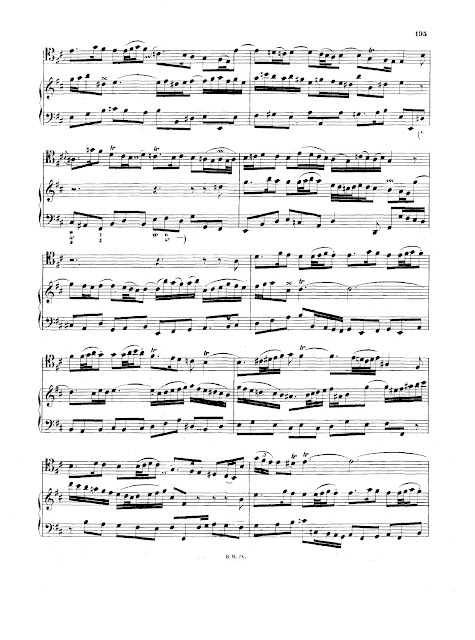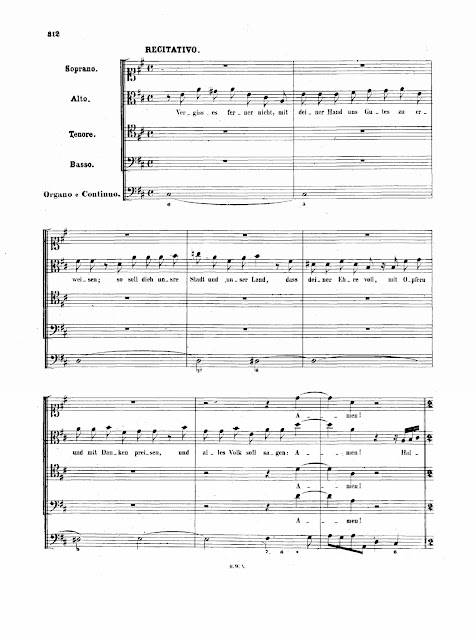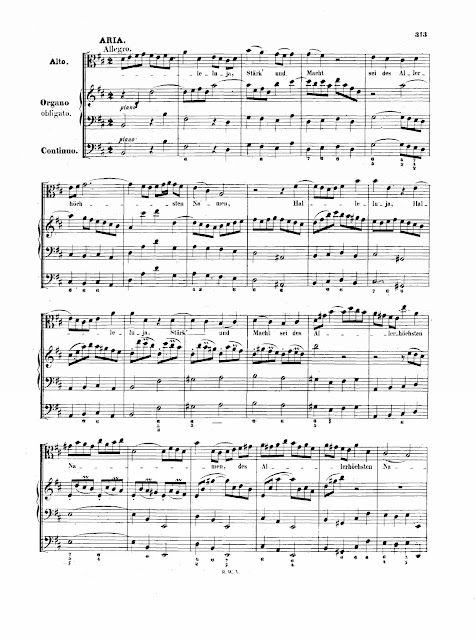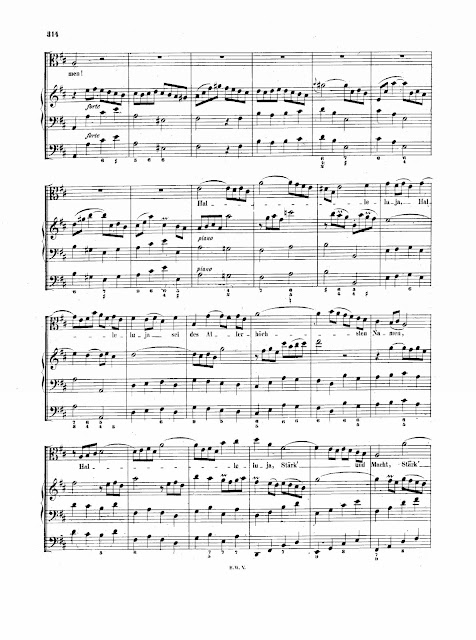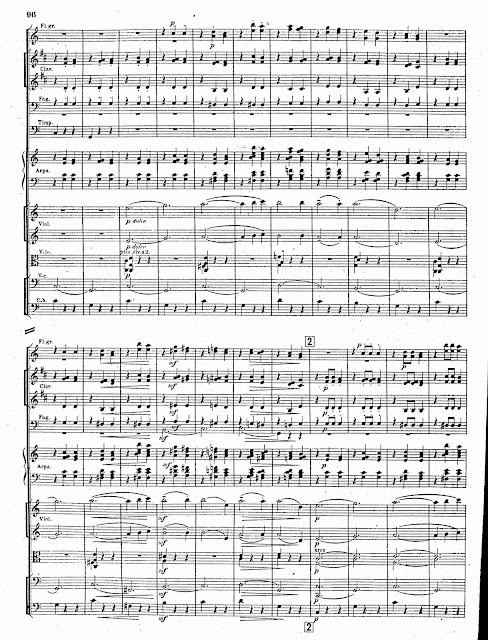CDXVII. BACH, J.S. (1685-1750)
Cantata #29: Wir danken dir, Gott, wir danken dir, BWV 29 (1731)
1. Sinfonia
2. [Coro]: Wir danken dir, Gott, wir danken dir
3. Aria (Tenore): Halleluja, Stärk und Macht
4. Recitative (Basso): Gottlob! es geht uns wohl!
5. Aria (Soprano): Gedenk an uns mit deiner Liebe
6. Recitativo (Alto, Coro): Vergiß es ferner nicht
7. Aria (Alto): Helleluja, Stärk und Macht
8. Choral (Coro): Se Lob und Preis mit Ehren
Netherlands Bach Society
Jos van Veldhoven, cond.
(24:54)
Composed for Ratswechsei, the inauguration of a new town council -- a ceremonial transfer of office -- and thus not part of any liturgical cycle.
1. Sinfonia
Bach was a great arranger of his own music. Here was have the Preludio from the E Major Partita for solo violin, BWV 1006 [see Post L] arranged for orchestra and organ:
2. [Coro]: Wir danken dir, Gott, wir danken dir
from Psalm 75; motet-style:


We thank Thee, Lord, we thank Thee
And we marvel at all Thy wonders
3. Aria (Tenore): Halleluja, Stärk und Macht
In this Da Capo aria, the tenor is accompanied only by a solo violin and continuo. Notice how the violinist (Shunsuke Sato) -- by tradition -- ornaments his part the second time through!


Halleluja, Strength and Might
May Thy name be high-exalted
Zion in Thy chosen site
There hast Thou Thy dwelling place
There will we and our descendants
Know the Father's loving grace4. Recitative (Basso): Gottlob! es geht uns wohl!
Praise God, for all is wellGod, our Preserver, true and triedOur Light, our Hope, our GuideProtector He of high and lowOur very lives to Him we oweHe blesses those of ev'ry stationHere Righteousness is met with PeaceAnd Truth and Mercy on a firm foundationWhat people is there anywhereTo whom God gives such constant care?5. Aria (Soprano): Gedenk an uns mit deiner Liebe
A prayer in
siciliano tempo; notice how the continuo drops out when the soprano enters, producing a feeling of quiet tenderness:
Remember us in Thine affection
Uphold us in Thy mercy still!
Bless the rulers who direct us
Do Thou guard us, guide us, protect us
Bid us all obey Thy will
6. Recitativo (Alto, Coro): Vergiß es ferner nicht
A prayer for protection, with an Amen from the chorus:
Forget us not, O Lord, stretch out Thy Hand
Thy bounty rich bestow
They folk in thankful praise thro'out the land
Come here to honor Thee
To pay in thanks the debt they owe
All joining us in singing: Amen!
7. Aria (Alto): Helleluja, Stärk und Macht
The first two lines of the text for #3; the organ replaces the solo violin as the obligato instrument:
Hallelujah, strength and might
May Thy Name be high exalted!
8. Choral (Coro): Se Lob und Preis mit Ehren
Be glory, praise and honor
To all the Holy Trinity
In Faith will God uphold us
For as He promised, must it be
That we may trust Him wholly
To his direction resigned
Rely upon Him solely
With heart with will and mind
Hold fast to Him forever, so sing we all today
Amen! for this is our portion
That naught can take away






